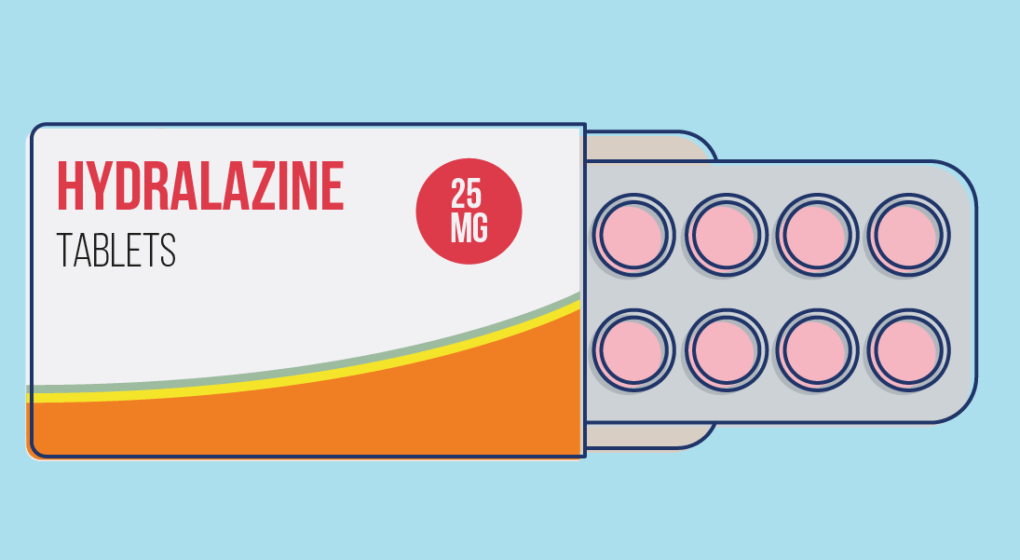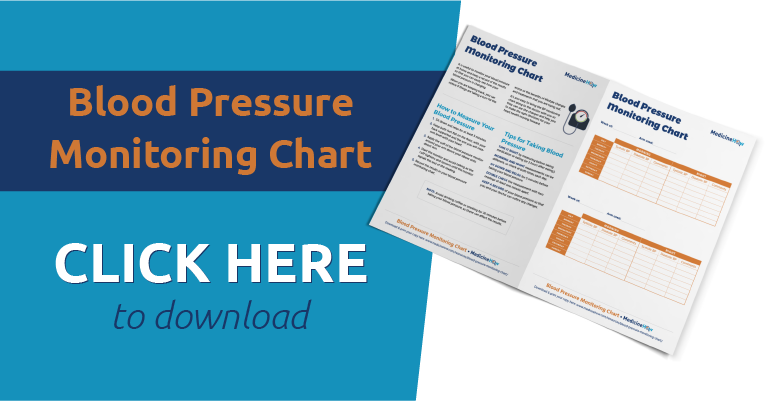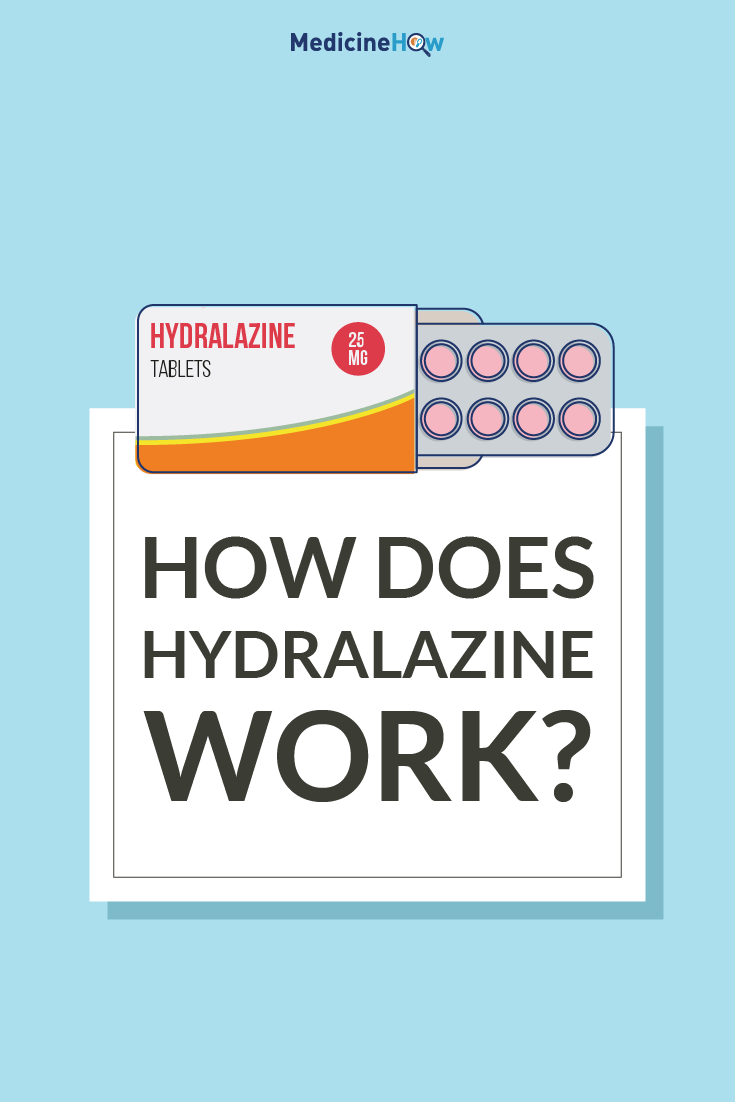
Hydralazine is a drug that works by causing the muscles surrounding the blood vessels to relax so that the blood vessels can expand, allowing the blood to pass through more easily. This lowers the blood pressure and helps in the management of hypertension.
Brand Names and Doses
Hydralazine is the generic name of the drug, which is the active ingredient that has an effect on the body, but you might recognise it better by the brand name, Alphapress, which is the name given by the manufacturing company.
Alphapress is available in two different oral doses: 25 mg or 50 mg.![]()
It is best to start with a low dose, such as a 25 mg tablet twice a day to allow your body to adjust to the effects of the drug and reduce the chance of side effects. Your doctor will then help you to slowly increase your dose until your blood pressure is well controlled, to a maximum of 200 mg a day split into two doses.
Your body is very efficient at removing hydralazine from your body so that half of the drug is already gone within a few hours of taking the tablet. This means that you will need to take a dose several times throughout the day to “top up” the concentration and action of the drug.
Hydralazine is also available as an injection, under the brand name Apresoline, which can be used to lower blood pressure in a hypertensive emergency.

How does hydralazine work?
Hydralazine works with an arteriolar vasodilator action, which means that it causes the muscles surrounding the blood vessels to relax and the blood vessels to expand. This allows more blood to pass through the passageway more easily, lowering the blood pressure. This effect mostly occurs in the arterioles and has little effect on the veins in the body.
As a result of this dilation, there is reflex sympathetic stimulation. This means that the heart beats faster (tachyarrhythmia) and there can be a retention of fluid in your body, called oedema.
What is hydralazine used for?
Hydralazine can be used to treat hypertension, particularly when you have tried other treatments that have failed to work as well as needed. For the best results, hydralazine should be taken in combination with a beta blocker drug and a diuretic drug.
The oral tablet is also sometimes used with a nitrate drug to manage heart failure.
In the injection form, it can be used to quickly lower the blood pressure in a hypertensive emergency.
Hydralazine Side Effects
![]() The most common side effects of hydralazine occur when the drug is working too well (usually because the dose is too high) and you end up with low blood pressure. Signs of hypotension include:
The most common side effects of hydralazine occur when the drug is working too well (usually because the dose is too high) and you end up with low blood pressure. Signs of hypotension include:
- Headache
- Tiredness
- Dizziness
- Flushing
If you notice these effects, you should talk to your doctor who can help you to find the right dose or an alternative medication so that they won’t affect you anymore.
The way hydralazine works can also cause reflex sympathetic stimulation. This means that the body automatically responds to the changes in the body, leading to an increase in heart rate and the retention of fluid in your body, called oedema.
H![]() ydralazine is not likely to be the best choice of drug for you in several situations. It should not be used if you are affected by idiopathic systemic lupus erythematosus. Additionally, you may need extra caution if you have:
ydralazine is not likely to be the best choice of drug for you in several situations. It should not be used if you are affected by idiopathic systemic lupus erythematosus. Additionally, you may need extra caution if you have:
- Coronary artery disease
- Cerebral artery disease
- Aortic aneurysm
- Tachyarrhythmia
- Heart failure
Finally, if you have poor hepatic or renal function, the dose of the drug may need to be reduced to lower the risk of side effects.

Pregnancy and Breastfeeding
Hydralazine is not recommended to be used if your are pregnancy, as it may distress your baby and cause their heart rate to increase, which can be dangerous. It is sometimes used in an acute event, however, to lower blood pressure during a hypertensive emergency.
If you are breastfeeding, you can take hydralazine with caution. Small amounts of the drug may be excreted in the breastmilk but it appears to be safe.
Pin it!


